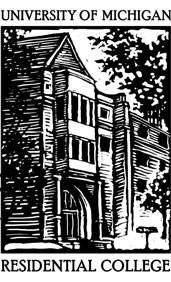One only needs to walk along the river in St. Petersburg to notice a few of the 1,500 palaces that make up what natives refer to as the “city of museums,” according to our tour guide, Yulia. The Winter Palace is the grandest of them all and houses only a part of Catherine the Great’s massive art collection. The Baroque style of architecture reveals the Czar’s massive amount of wealth that was used to hire foreign architects and collect enough art to cover fourteen miles of corridors. Catherine expressed her power with her money and her art collection. She accumulated about 300 pieces a day for thirty-four years and had to expand the Winter Palace to include an additional four more buildings to use as “storage” for all of her art. However these storage buildings are unlike any other. They are decorated just as extravagantly as the Winter Palace and show off the royalty’s Imperial power over the country.

The town of St. Petersburg was started on Peter-and-Paul Island with a church and a fortress. The architecture on this island is very contradictory to that of the island that houses the Winter Palace. As opposed to the extravagant rooms, emphasis on detail, and bright colors, the buildings on Peter-and-Paul Island are much more conservative, with an exception of the church, the central focus. The church was instructed to be the tallest point in the city by Peter the Great and remains so to this day. It is unlike any other Russian Orthodox Church with its lack of domed spires, gold leafed ornaments, huge windows, and pastel colors. The fortress on the other hand was painted only in grey scale and the small windows offer little light. Unlike the Winter Palace, no ornaments adorn the rooms, which are very unimpressive with their low, arched ceilings. These differences can be attributed to the time it took from when Peter the Great first decided to build a city in this location to when Catherine the Great decided to make it into an Imperial city and spend all of her money on its extravagance.
Unlike I expected, Saint Petersburg is very different from other Western European cities I have visited. It has the rich history like that of the rest of Europe, but what surprised me the most was the lack of emphasis on the service industry. Russians do not tip, so wait staff has little reason to make their customers happy. After having ordered, we would have to wait sometimes up to ten minutes for the first drink order. The next person’s drink would not arrive at the table until five minutes after that, and the next person would receive their order another five minutes after that and this continued so that in the end, by the time the last person received their order, the first person would have already finished.
The same lack of service goes for the cleanliness of restrooms. Often restrooms had no toilet paper or paper towels and often toilets did not have toilet seats. Also nearly every restroom had a sign to not throw anything, including toilet paper, into the toilet, so if a restroom does offer toilet paper and paper towels, it would have two buckets, one for toilet paper and one for paper towels.
Also the streets, especially the sidewalks, of Saint Petersburg are in horrible conditions in the winter. The sidewalks all have an indefinite number of inches of ice on them, which makes walking extremely difficult. I would have thought that after so many years of treacherous winters, they would have come up with a practical system to keep the sidewalks clear of hazards, but that is not the case. Even so, nearly every Russian woman wears high heel boots around all parts of the city, but often has her arm tightly wrapped around a man’s, presumably their only form of support. I think at least half of us slipped on the ice walking around Saint Petersburg, and I slipped and fell twice. Amazingly, I never saw a Russian even come close to falling.
While in St. Petersburg, I would have done a few things differently. First of all, I would have liked to walk around and explore the center of the city in more depth. This includes further exploring destinations such as Church of our Savior on the Spilled Blood, a gorgeous church of typical Russian architecture, which we walked around many times but never went in to. Also, next time I visit a foreign city, I won’t be as hesitant to ask for directions. My group wondered around the center of the city for almost an hour looking for the metro station, but all of us were too scared to ask for directions, in Russian. Finally we asked a young couple who not only spoke English, but also walked us to the Metro station while talking to us about Russia.
I believe Russians who have grown up with these customs do not even bother to question the lack of services and do not expect the same kinds of services we consider standard in the United States. While roaming the streets of St. Petersburg, I noticed as early as eight in the evening, drunkenness already seemed to abound. In class, we reviewed drunkenness as an aspect of Provincial life, but this is the case in the cities as well, although perhaps to a lesser degree. After eight in the evening, it was hard to walk more than a few steps without seeing an empty bottle of alcohol dropped in the snow.



This is a good blog for anyone who wants to know about affiliate jump.Thanks for sharing such a nice information to everyone.
ReplyDelete